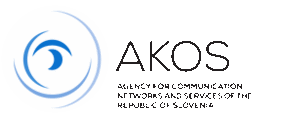|
|
|||||||||
Digital TV NetworksDue to the numerous advantages of digital technology and above all the lack of available capacities, Slovenia switched to digital TV broadcasting in 2010. In addition to larger capacities, digital television networks also open possibilities for extra services as well as HD TV. The main advantage of digital television broadcasting lies in the fact that a transmitter does not transmit just one program on a certain frequency, but a digital package of programs – a multiplex. Frequencies for Digital TV NetworksFrequencies are required for digital television networks. The same band of the radio frequency spectrum is used as was used for analog television, except for channels 61 and 69. In this part of the spectrum, television broadcasting is being abandoned due to the introduction of broadband mobile services in the broader European area (digital dividend). Due to the significantly different characteristics of digital broadcasting, television channels were reallocated at a conference in Geneva in 2006. A new frequency plan is now being used for digital TV broadcasting. How to get frequencies?
Frequencies for digital television network can only be acquired via a public tender, through which the Agency allocates frequency bands (television channels) for single-frequency networks. Successful bidders receive decisions on the allocation of radio frequencies and become digital television network operators. They must provide transmission services (space in the multiplex) to all interested parties under equal conditions. What can be placed in a multiplex?
The network operator is at the same time a multiplex operator, and must provide coding and multiplexing of channels. In its multiplex, an operator may transmit the radio and television programs which were granted the right for digital broadcasting in the network managed by the operator. This license can be acquired by interested program publishers through public tenders published by the agency. |
|||||||||
|
Agency for communication networks and services of the Republic of Slovenia
Stegne 7, 1000 Ljubljana, Slovenia T: 01 583 63 00 F: 01 511 11 01 E: info.box@akos-rs.si |
|
 RSS
RSS Slovenian
Slovenian


 Top of the page
Top of the page
 Print
Print